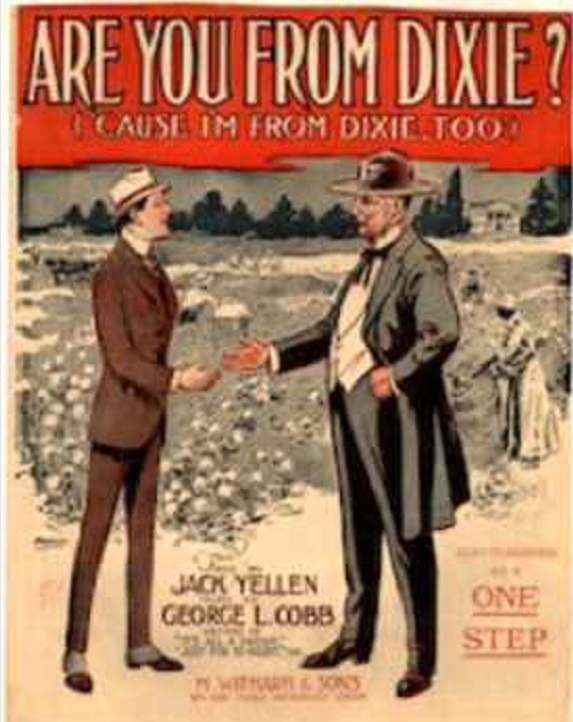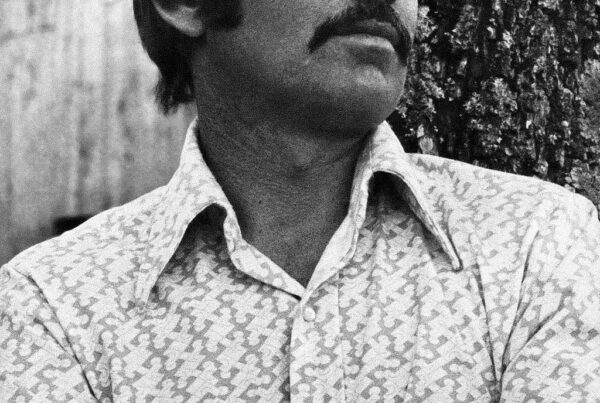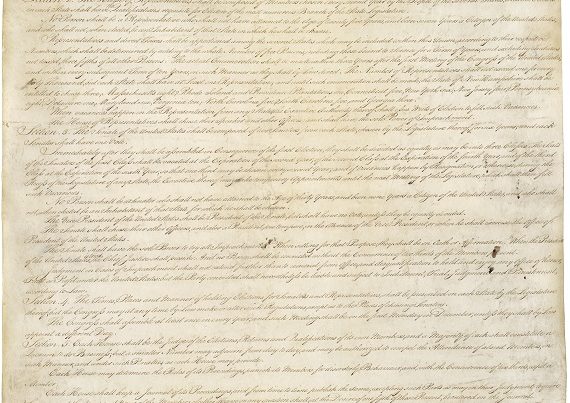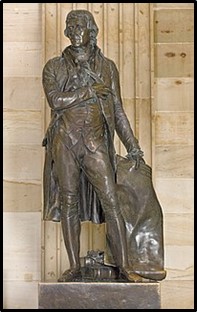In October 1901, President Theodore Roosevelt invited Booker T. Washington to dine at the executive mansion. This was an unprecedented move. No African-American had ever been asked to dine with the president, and while neither Roosevelt or his staff said much of the event, it was surely done in the spirit of reconciliation and Roosevelt’s desire to be “the people’s president.” Reaction to the visit was mixed. The pro-Republican press tended to support Roosevelt’s unexpected gesture while Democratic organs, North and South, either questioned Roosevelt’s intentions or denounced the meeting altogether.
Historians have mostly focused on the Southern response to the event, primarily “Pitchfork” Ben Tillman’s vicious statements condemning the dinner as a slippery slope toward the creation and acceptance of a “mongrel race.” But less than one month later, William Jennings Bryan dedicated nearly three pages of his personal newspaper The Commoner to what one Southern paper called the “peculiar” interview. Bryan was no race baiter. He showed sympathy toward African-Americans and argued that they were as capable of “self-government” as any member of white American society, yet he also believed in the status quo in regard to race relations. Bryan wrote that he:
…hoped that both of them will upon reflection realize the wisdom of abandoning their purpose to wipe out race lines, if they entertain such a purpose. Prof. Washington’s work as an educator will be greatly impaired if he allows it to be understood that his object is to initiate the members of his race into the social circles of the whites, and he will do injustice to those of his own color if he turns their thoughts away from intellectual and moral development to the less substantial advantages if there are any advantages at all to be derived from social equality.
This was the widely held sentiment of the majority of Americans in 1901, North and South, even by those who, unlike Tillman, saw value in Washington’s work and purpose at the Tuskegee Institute and supported his charge to “cast down your buckets where you are.” Washington personified reconciliation, the key to understanding both Northern opposition to Mr. Lincoln’s War paradoxically encouragement for Lincoln’s “with malice toward none” approach to “reconstruction” rather than the “recreation” of the United States.
Reconciliation began before the War ended in 1865 and continued unabated well into the late twentieth century. Northern Democrats and conservative Republicans favored “resumption” of the Union once hostilities ceased and sought reintegration of the South into all aspects of the United States as quickly as possible. Roosevelt himself was part of this policy, as was his predecessor William McKinley. Long before Richard Nixon made the phrase “Southern strategy” popular, William McKinley toured the South as president, even standing for Dixie while it was played in Atlanta, and in his first inaugural in 1897 insisted that “The North and South no longer divide on the old lines, but on principles and policies; and in this fact surely lover of the country can find cause for true felicity.” Roosevelt admired the “unreconstructed” views of his Georgia born mother and ordered all confiscated Confederate flags be returned to their Southern homes in 1905. Every president from McKinley in 1896 to Bill Clinton in 1996 courted the South and used Confederate imagery to do so. The South was not some alien section of “deplorables” to be castigated but a valuable and manifestly integral part of the American experience.
Music echoed this sentiment, and as virtually every distinctively American form of music originated in the South, it became the most enduring and conspicuous example of “reconciliation.” Southern music is provincial, a reflection of the culture that produced it, and every Southern State has a song dedicated to it in popular culture. The lyrical content of much of postbellum Southern music–regardless of form, style, or genre–can be divided into two categories: affirmation and defiance. Love and respect for people, place, and family underpin both descriptions, and Northerners quickly adopted an affirmationist version of the South through music. Many of these tunes were written and performed by Northerners themselves.
These songs tended to incorporate a superficial understanding of Southern society, but nevertheless portrayed the South and its people in a positive light. The most popular singer in America during the 1910s, Billy Murray of Colorado, often belted pro-Southern songs into gramophone recordings. “Anything Is Nice If It Comes From Dixieland” and “Are You From Dixie (‘Cause I’m From Dixie, Too)” were popular tunes in the World War I era. Sunny weather, warm people, good food, beautiful women, and a slow pace were common themes in these Southern themed songs. “Are You From Dixie” was penned by a Polish Jew and a native New Yorker:
Hello, there, stranger! how do you do?
There’s something I’d like to say to you
Don’t be surprised
You’re recognized!
I’m no detective but I’ve just surmised.
You’re from the place where I long to be,
Your smiling face seems to say to me,
You’re from my own land,
My sunny homeland,
Tell me can it be?
It was a way back in eighty nine,
I crossed the old Mason Dixon line
Gee! but I’ve yearned,
Longed to return
To all the good old pals I left behind.
My home is way down in Alabam’
On a plantation near Birmingham,
And one thing’s certain,
I’m surely flirtin’
With those southbound trains:
Are you from Dixie?
I said from Dixie!
Where the fields of cotton beckon to me.
I’m glad to see you,
Tell me how be you
And the friends I’m longing to see.
If you’re from Alabama, Tennessee or Caroline
Any place below the Mason Dixon line
Then you’re from Dixie,
Hurrary for Dixie!
‘Cause I’m from Dixie too!
No one considered the theme or lyrics to be insensitive or odd in 1919. Jerry Reed recorded a slightly different version in 1969 where it became one of his biggest hits. The highest paid radio act in 1928, New York’s “Happiness Boys,” often sang Southern themed songs, with “I Would Rather Be Alone In The South” one of their most recognized tunes. Anything was better than being in New York, but the South, with its climate, women, and food, represented a marked influence over anywhere else in America.
And this characterization of the South was not confined to white American society. Louis Armstrong’s “When It’s Sleepy Time Down South” was a moderate hit in the jazz era, but later became his signature tune. The language would be considered “racist” today, but the song was penned by Armstrong and three other African-American song writers, one of whom was a leading song writer of the Harlem Renaissance. Armstrong even performed a short film of the tune in 1942 clad in plantation costume while sitting on cotton bales at a Mississippi wharf. No one, white or black, blinked an eye, while one of the dancers in the film, Nick Stewart, was a pioneering African-American actor.
Ah, the pale moon’s shining, the fields below
Darkies crooning songs soft and low
You needn’t tell me, boy, because I know
It’s sleepy time down south
The soft winds blowing through the pinewood trees
Folks down there live a life of ease
When old mammy falls upon her knees
It’s sleepy time down southOh, steamboats on the river a coming, a going
Splashing the night away
You hear those banjos ringing, the darkies singing
They dance ’til the break of day
Dear old southland with his dreamy song
Take me back to where I belong
Right here in my mammy’s arms
When it’s sleepy time down south
Detractors would argue that this song and film were made for a white audience and as such had to conform to white sensibilities. That is the same critique of reconciliation. But this is a misrepresentation of both. Armstrong recorded the song nearly one hundred times in his career and it chronicled the Southern diaspora of the early twentieth century. Nearly twenty million white and black Southerners moved away from the South following the War, and Armstrong capitalized on a latent longing for a better environment South of the Mason-Dixon, even among African-Americans. It was their home, too, and all forms of Southern art in the postbellum period included peaceful and positive interactions between white and black Southerners. Northerners often imaged the worst of Southern society, and certainly the highly publicized acts of violence against African-Americans added fuel to the fire, but while nasty, illegal, and unjust, these were the exception not the rule. As the historian C. Vann Woodward pointed out in his The Strange Career of Jim Crow, Northerners had no room to lecture the South on racial injustice. Segregation was born in Northern cities before the War, and the North was never immune to racial violence. Some of the worst lynchings of the postbellum era occurred in Northern States. That also added to the desire among some members of the African-American community to go home.
Perhaps the most iconic reconciliationist song was Phil Harris’s “That’s What I Like About the South.” Harris was not born in the South, but no one provided a better image of the region and her people than the popular comedian best known for his work on the Jack Benny Show and for voice work in Disney films. “That’s What I Like About the South” captured the spirit and fun of the region. Who wouldn’t want to go there after hearing this:
Won’t you come with me to Alabamy
Let’s go see my dear old Mammy
She’s fryin’ eggs and boiling hammy
That’s what I like about the SouthNow there you can make no mistakey
Where those nerves are never shaky
Ought to taste her layer cakey
That’s what I like about the SouthShe’s got baked ribs and candied yams
Those sugar-cured Virginia hams
Basement full of those berry jams
An’ that’s what I like about the SouthHot corn bread, black-eyed peas
You can eat as much as you please
‘Cause it’s never out of season
That’s what I like about the SouthAahhh, don’t take one, have two
There’s dark brown and chocolate too
Suits me, they must suit you
‘Cause that’s what I like about the SouthWell it’s way, way down where the cane grows tall
Down where they say “Y’all”
Walk on in with that Southern drawl
‘Cause that’s what I like about the SouthDown where they have those pretty queens
Keep a-dreamin’ those dreamy dreams
Well let’s sip that absinthe in New Orleans
That’s what I like about the South
Such positive views of Southern society reached millions of Northerners in the early twentieth century. The South became a popular vacation destination and by the post World War II period a permanent destination for Northerners looking to escape the problems of New England, the Midwest, and the Mid-Atlantic States. But what Northerners could never understand is that you can take the Yankee out of New England but you can never take the Yankee from the man. Southern society was an organic creation of the people and their culture, and the weather never determined how the Southern people would develop. What Northerners liked about the South would be erased by Northern culture as they moved to a warmer climate. New England has been transplanted to Charleston.
By eliminating the real culture of the people and the place, Northerners are unwittingly eliminating what made the South a bastion of culture for much of American history. There is a reason writers, artists, and musicians loved spending time with Southern people, why H.L. Mencken considered Southern culture to be the most admirable in the United States; it was not infected with the plastic consumerism that dominated the Deep North in the twentieth century. This is what the Fugitives warned against. What Northerners loved about the South could only be preserved if the South remained as it was, imperfect and undeniably human. To Southerners, Hank Williams, Jr. said it best in the 1970s: “If Heaven ain’t a lot like Dixie, I don’t want to go.” That had been the case since the English began populating the Southern colonies in the seventeenth century. “Anything is nice if it comes from Dixieland.”






